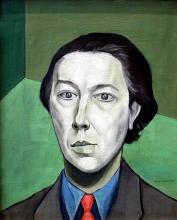
Guided tour of the exhibition “The neo-impressionist portrait” at the Culturel Centre ING, followed by a dinner at the University Foundation .
Originating in Paris, and a real turning point in the history of painting at the end of the 19th century, the neo-impressionist movement developed in a unique way in Brussels.
In 1886, Georges Seurat exhibited his painting "A Sunday Afternoon on the Island of La Grande Jatte" in Paris. Noticing the modernity of this masterpiece, his Belgian contemporaries invited Seurat to exhibit the work the following year at the Salon des XX. The work inspired both the artists in this Brussels circle and artists invited from many countries in Europe. The revolutionary theory of neo-impressionism was welcomed enthusiastically in Brussels, which rapidly became a platform for the exchange of progressive ideas.
From then on, the neo-impressionist movement revolved around two axes. The French school, whose protagonists Georges Seurat, Paul Signac, Lucien Pissarro, Maximilien Luce, Henri Delavallée, Henri-Edmond Cross and Achille Laugé used this technique in their research into light and objective colour, recomposed by the eye through juxtaposed points of pure colour. In terms of the portrait, the French school conveyed the idea of the effigy portrait with its neutrality and precise objectivity.
The international and Belgian schools, represented by William Jelley, Henry Van de Velde, Georges Lemmen, George Morren and Théo Van Rysselberghe, demonstrated that this divisionist colour technique could be perfectly applied when creating intimate and psychological portraits, with great depth and meticulous in their use of light to create a three-dimensional image.
Personalities of different artistic disciplines had themselves portraited by neo-impressionist artists, who were themselves invited to participate in literary circles. Thus modernist ideas spread through all types of cultural manifestation.
